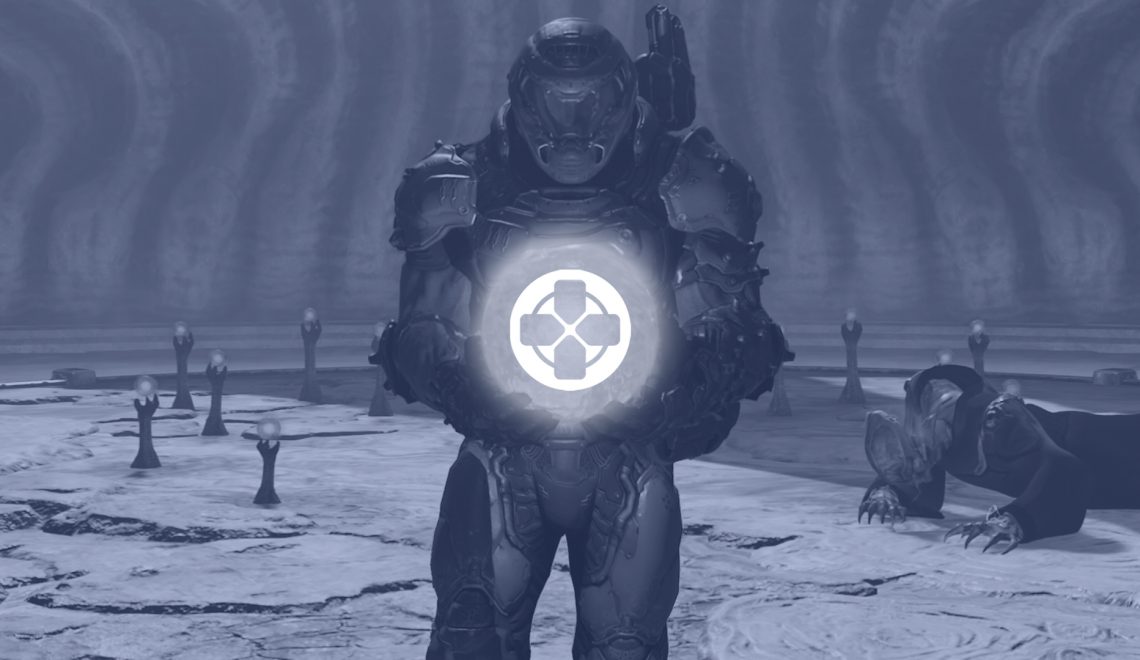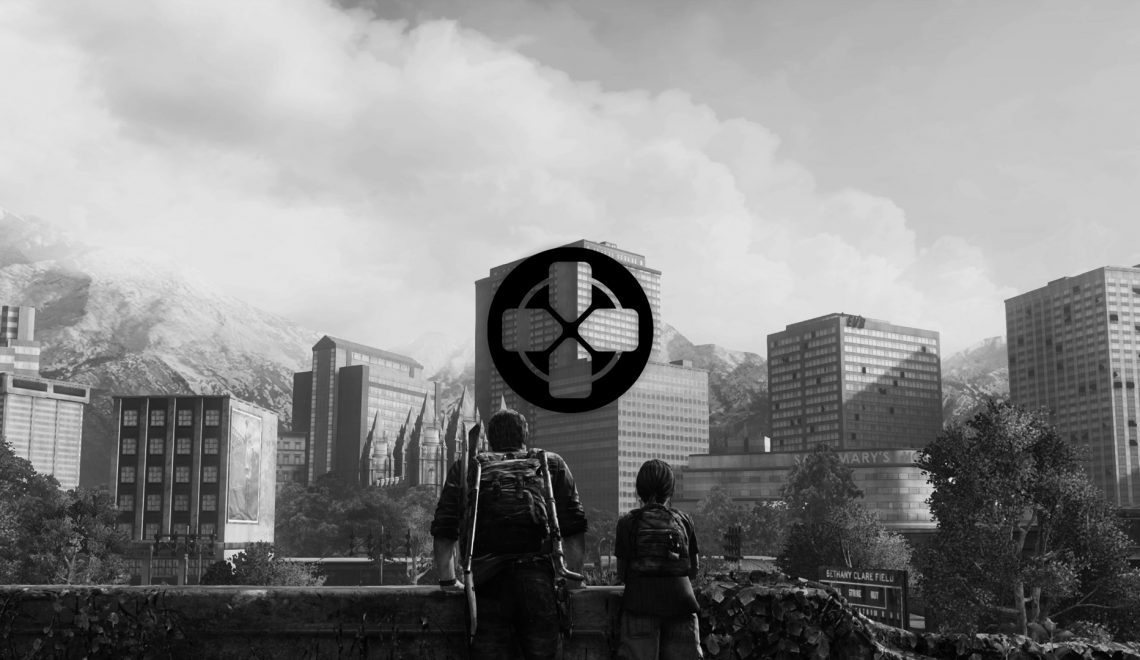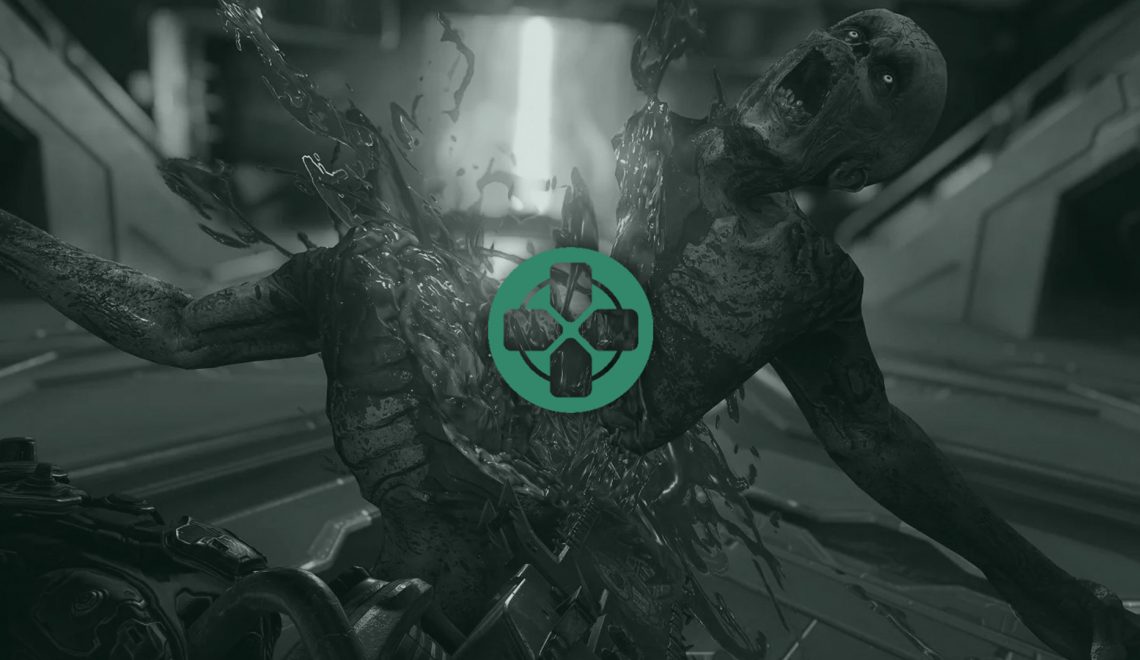Dark Souls II is somewhat deceitful in name. It takes place in a far-off land where the legends of Lordran are tangentially connected to the story. The gameplay, level design, and bosses take some surprising twists as well. If anything, the game feels more like a spin-off than a sequel, and that makes sense given how Hidetaka Miyazaki (the mastermind behind Demon’s Souls, Dark Souls, etc.) wasn’t in the director’s chair. I remember how fears were compounded with press comments on making the game more “accessible,” but in playing it, that was meant more from a communicative angle rather than a difficulty one…well, mostly. And those mixed thoughts are what makes Dark Souls II a black sheep in the Souls trilogy with pros and cons alike.
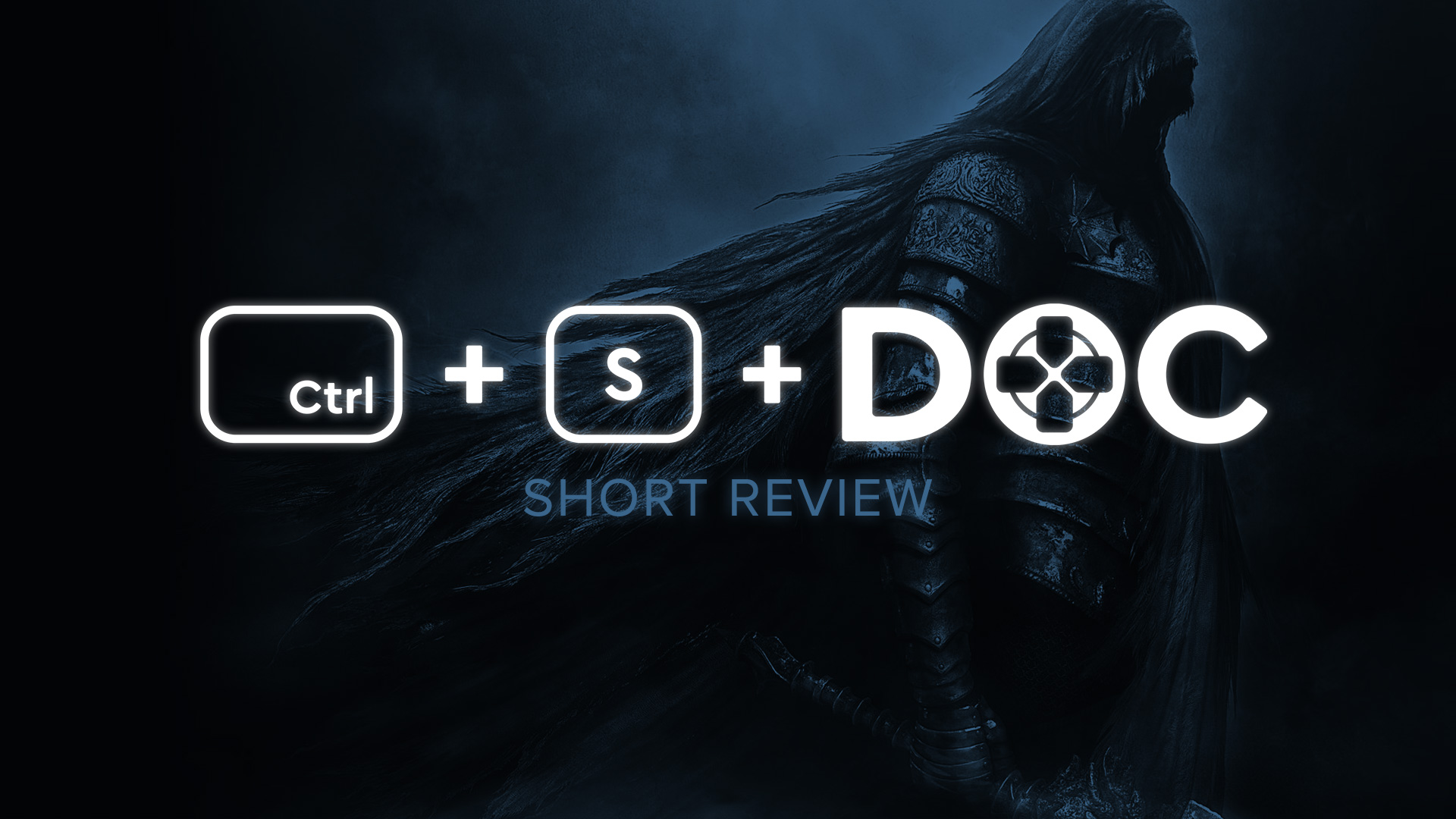
It’s immediately apparent how different Dark Souls II is with controls. It retains the same layout but feels weird, even in contrast to the third game. Movement is lighter yet restricted (as if this were a PC port that didn’t take advantage of 360-degree movement with analog sticks). The camera is more slippery and accelerates unevenly. Even the enemy lock-on function is inconsistent. It’s like the “game feel” has forms of resistance layered over it that I gently wrestled with throughout my experience, making gameplay unusually awkward and stilted in minor yet constant ways. I couldn’t shake these thoughts having come straight off of Dark Souls Remastered, and after booting it up once more, I found my impressions validated.
That’s not to say the core mechanics take a hit in the process. There’s little to no difference with how combat functions with the exception of a slightly wider selection of weapons. Stats have been slightly reworked by splitting what types of magic and resistances you can strengthen, which speak for an expanded list of sorceries, pyromancy, and dark magic to delve into, too. I usually stick to classic strength builds with a sword and shield, but felt a greater inclination and accessible entry for magic this time around, partly because the methods and benefits to it are communicated upfront and clearly early on.
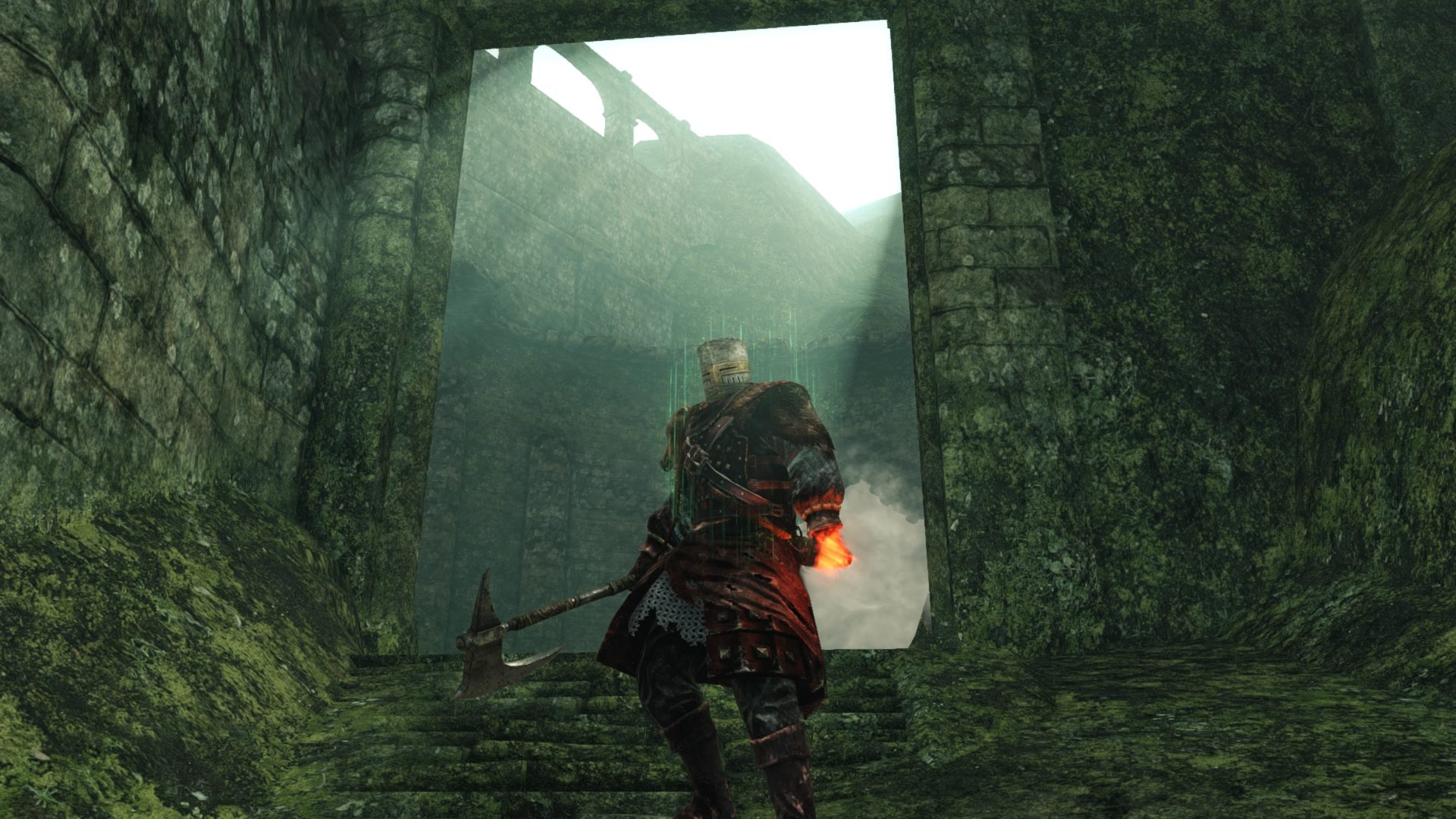
It’s not really important, but this game has awesome armor sets and weapons. I’d often sacrifice a bit of stats to make sure I looked great. As a friend remarked recently, “What’s the point of fighting if you don’t look great doing it?”
The same goes for upgrading. Figuring out what to improve, having the right materials, and who to go to is confusing in the original game. I had to resort to wiki guides to figure out which specific equipment and boss souls I’d need to create boss weapons, shields, etc. Dark Souls II simplifies this system by separating upgrading paths and laying your options before you without leaving you to your own dim devices.
Instead of having to reinforce (increases stats) a weapon and see how it turns out with ascension (adds elemental properties), you can infuse (takes place of ascension) regardless of how much you’ve reinforced. One blacksmith handles infusion, another does reinforcement, and the last (who’s ridiculously hard to find) specializes in boss weapons. With the third, all you have to do is trade boss souls for their special weapons, which you can also preview to see if some are worth the investment. I’m glad that From Software let up on being annoyingly obtuse while letting nuanced aspects of the game’s systems remain vague. This positive change is reflected in the UI as well, which is visually cleaner and more attractively organized than the first game’s interface.
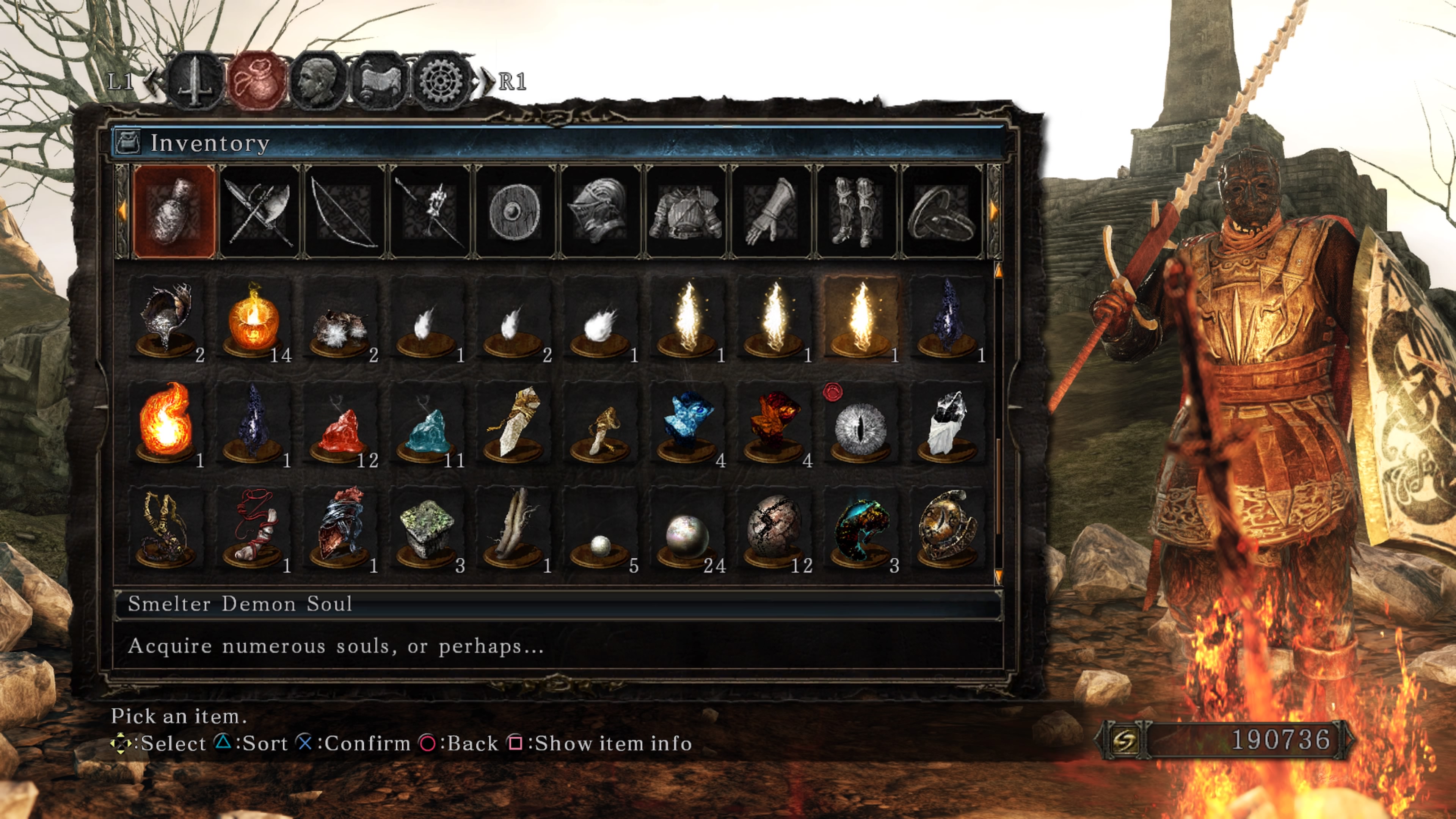
Seriously, I can inspect my character at the same time I change armor and weapons. It’s great, especially when I need to switch something out in the middle of a fight. Navigating all of the menus is a breeze and is a great quality of life change.
I said that Dark Souls II isn’t narratively connected to the first game, but there are subtle allusions and callouts to it with bits of dialogue and ancient, forgotten items you’ll pocket on your journeys. Whereas the third game feels more like a proper sequel, there’s a fresh boldness to the second game in its distinct kingdom and characters set apart in the same universe. Indeed, while most of the NPCs you meet along the way aren’t as quirky or interesting as the first game’s lot, characters like Vendrick and Aldia are among my favorite characters in the series. Whereas Dark Souls brought the order of its world to bear through the philosophical and moral musings of its characters, the sequel’s cast shine a critical light on its structure, as if it’s deconstructing its universe in a self-reflective commentary.
In other words, instead of wrapping your head around how the Souls world works, you’re left to wonder why, especially through the sobering, tragic tales of the Sunken, Iron, and Ivory kingdoms in the DLC. The game confronts you more directly about the state of man, hollowing, and the Ages of Fire and Dark with new victims caught in their cycles. It further incentivized me to read item descriptions and listen to dialogue because here lies the trilogy’s most profound, intellectually stimulating, and underrated story.
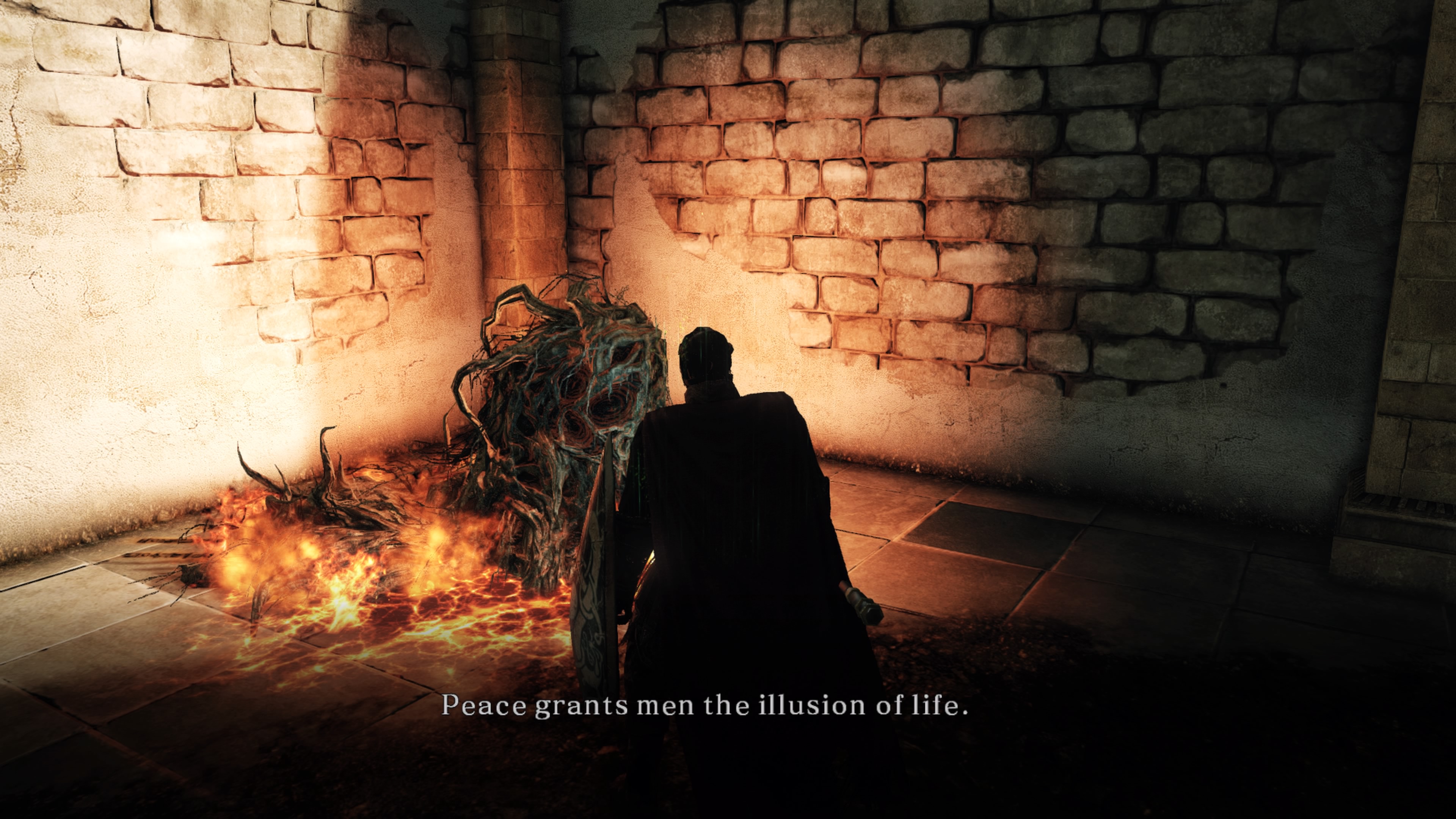
I really want to tip my hat to the writers. They come up with some killer lines that I was rolling around in my head for a while. If you didn’t pay much attention to your actions in the first game, I can’t imagine you won’t now.
The world of Drangleic isn’t as gloomy or dark as Lordran. You’ll come across more biomes and—at least with the Scholar of the First Sin edition on PlayStation 4—notice a greater mastery over detail, scope, lighting, scale, and weather effects. Visually, the game is objectively superior on a technical level, but in terms of creativity, there’s something missing. Very few games with medieval fantasy settings can match the unique bar that From Software has aesthetically set, but the mystery and weirdness that permeated the first game isn’t as present here. Perhaps some genericness snuck in, which can be said for boss and enemy designs as well. Nevertheless, there’s plenty of jaw-dropping set pieces and shockingly fresh environments to stumble upon.
It becomes frustrating to get around in the first game since fast travel isn’t available until you defeat Ornstein and Smough (i.e. about halfway through). However, it did facilitate exploration, allowing me to find joy in slowly piecing together the interconnected world through my own efforts. The sequel makes fast travel an option the moment you reach your first bonfire. However, it should’ve tipped me off to the linearity to come.
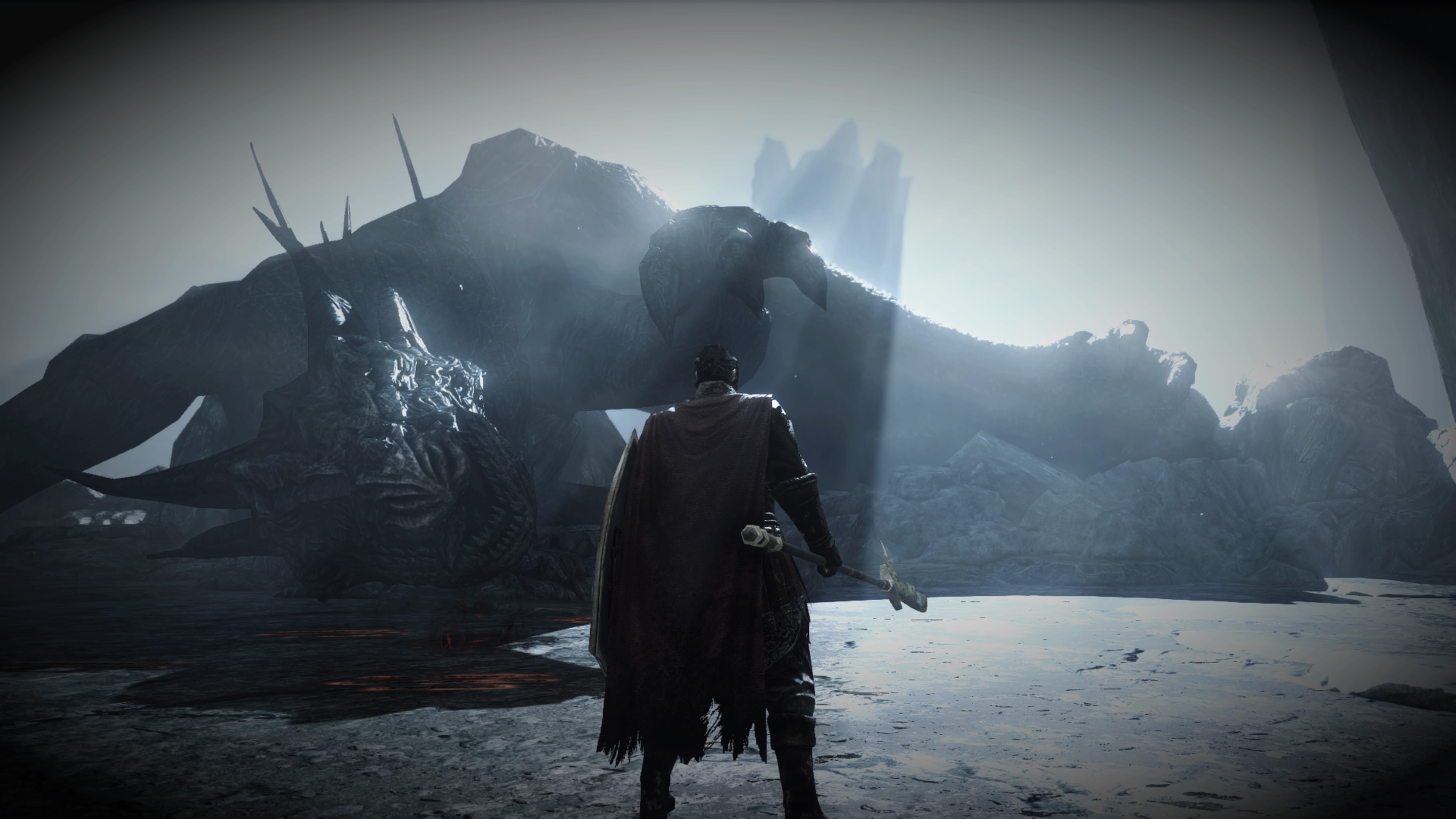
In touching the husks of ancient beings, you can explore brief snippets of their memories close to death. There’s a skeleton of a dragon above this boss that you fight, and should you return to it, you’ll be greeted to the tranquil and beautiful yet saddening scene of its demise. I obtained its soul and used it to create my favorite weapon. It even replaced the lance you see in the screenshot, which was my weapon of choice in the first game, which I like to imagine was lost and found by my character eons later. Anyways, these memories are linear yet memorable levels in contributing to the lore of Drangleic.
If you imagine the layout of Lordran as a multilayered, twisting web, Drangleic is more like a star with some isolated points around it. There are a couple paths extending from the main hub that reach out far to multiple locations, but very rarely do they cross paths or double back elsewhere. There are also several areas that keep to themselves, so eventually, the game’s narrow, more linear layout became clear. This isn’t to say that the freedom to tackle locations in a loose order isn’t appreciated, but the world isn’t as exciting to explore since most areas don’t branch out, meaning you’ll often come across dead ends that make fast travel a limiting yet common necessity. That makes exploration less memorable, but I’d say the level design slightly exceeds the first game on a moment-to-moment basis with a bigger assortment of minor puzzles, twisting paths, and hazards to handle.
There are a lot of new, varied enemies with excellent move pools, too. Dark Souls II continues the trend of needing to carefully study and pick foes apart to defeat them, but sadly, the majority of bosses are woefully underwhelming. Two are actually remixes from the first game along with a couple duplicates. However, the tragedy in the bosses is that there are excellent concepts behind many of them. You’ve got to fight the Flexile Sentry in a slowly flooding room; Scorpioness Najika has an attack that forces you to be mindful of where you stand; The Pursuer spawns at random throughout the world (like Nemesis in Resident Evil 3) until you get rid of him for good; Executioner’s Chariot is a boss set around a circular area that you have to go around full-circle to stop said chariot (while you’re avoiding it and other enemies).
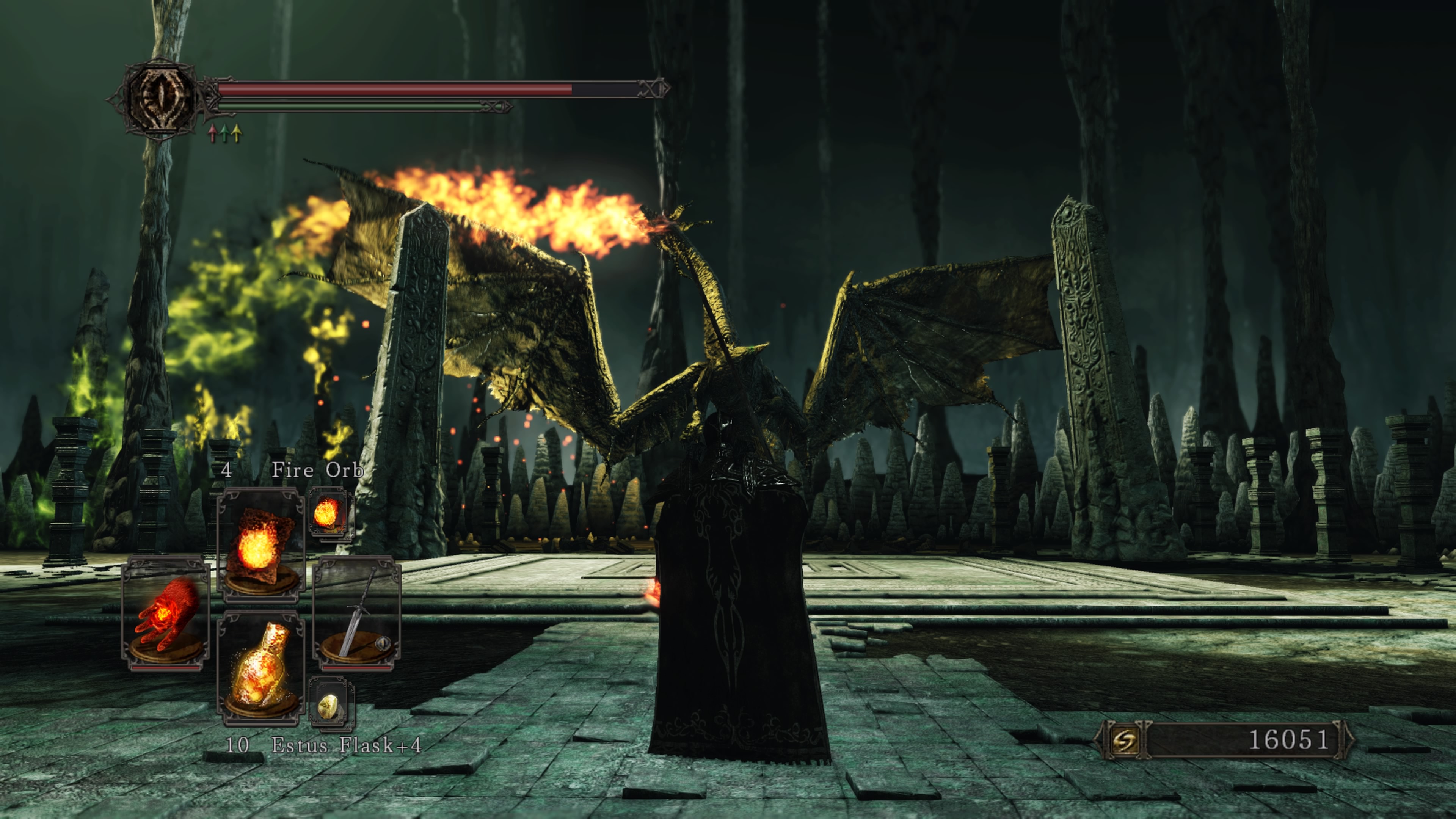
There are incredible openings for the boss fights in the DLC. Sinh is a poison dragon that you’ve got to watch out for as he flies around and tries to bear down on you. It comes right after another boss fight!
My favorite example is the Looking Glass Knight. I assumed he’d not only bring in other enemies to fight you with his mirror shield, but also trip up players by using illusions and teleportation with mirrors in the environment. Since he isn’t that tough, why not absorb the player in a mirrored world where the movement and camera controls are inverted? Or you fight upside down? Nope. Novelty is shallow with most bosses. Their attacks are simple and telegraphed too obviously, so you’ll often use a hit-and-run strategy with little risk. Don’t get me started on the likes of the Royal Rat Authority, Covetous Demon, or Prowling Magu and Congregation. Unpredictability and aggression just don’t factor in with these bosses’ temperaments, but strangely enough, there are exceptional exceptions.
The Lost Sinner and Throne Watcher and Defender are the only ones in the main fare worth mentioning, but the DLC…my goodness, I could ramble on about Elana’s deep, diverse pool of attacks. Sinh is up there with Kalameet as the best dragon boss fight. The overwhelming offense of Fume Knight? The shocking range and grace of Sir Alonne? The franchise is at its best with these bosses, and I give my accolades to the level design leading up to them as well. While the Ivory King’s locale suffers from boring backtracking (and some Bonfires’ placements across the DLCs is infuriating), every DLC has compelling layouts with unique mechanical interactions and platforming. They add a worthwhile 20-30 hours to the 50-hour main story that help the game end on a much higher note than it would’ve otherwise.
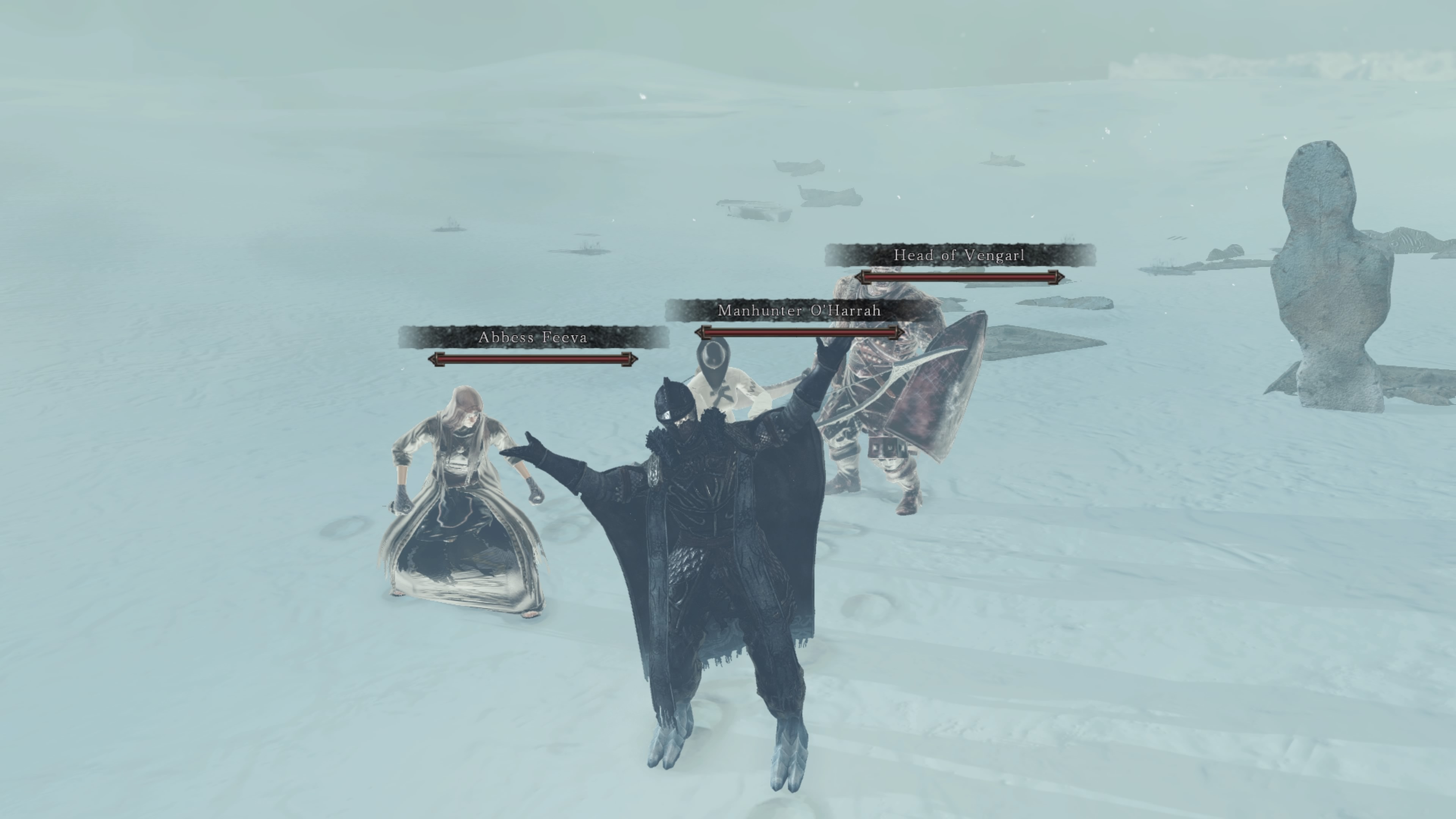
You can summon multiple NPCs to aid you in combat. I needed them for the Frigid Outskirts to take on Lud and Zallen. Or, alternatively, the most annoying bosses amid the most horrid, disgustingly unfair area in the entirety of the Souls trilogy. I didn’t even finish it!
As for the multiplayer component, I didn’t bother with it, so I’m not commenting on it. However, I will mention Human Effigies. They take the place of Humanity, which allowed players to play online in the previous game, but now it’s tied to how much health you have as well. Your health whittles down as you repeatedly die, meaning you’ll need to use an Effigy to reset your health bar or use an item to mitigate the effect. It serves the purpose of forcing the player to care more about their deaths, similar in purpose to how weapons break more easily. I think they contribute small yet welcome difficulties to the nature of the Souls gameplay, but I won’t lie that these things can create a false sense of difficulty…ah, I’m getting carried away.
concluding remarks
Dark Souls II is like a middle child trying to stick out from its other siblings with mixed results. The game proves troublesome as it steers from the type of exploration, bosses, and game feel established by its predecessor. However, it improves upon mistakes made by the eldest while exhibiting moments of comparable and, sometimes, even greater brilliance with its own bosses and story. It also blazes a path for the youngest to find a proper balance of new and old ideas in retrospect, so even though Dark Souls II is a black sheep, it has impressive qualities that make it more than worthy of being shepherded into your attention.

